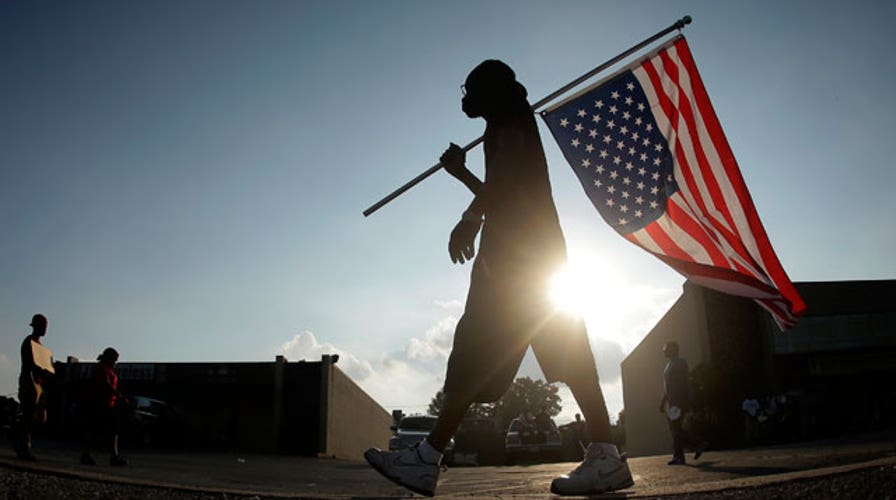Editor's note: The following commentary originally appeared in the Manhattan Institute's City Journal.
The American understanding of riots and racial violence was shaped a half-century ago, during the insurrections of the 1960s. To judge by the responses to the current rioting in Ferguson, Missouri, a suburb of St. Louis, little has changed since then.
After riots have wrought their physical and psychic damage, some invariably declare that the unrest was constructive.
Patricia Bynes, a Democratic committeewoman for Ferguson, rationalized that the events in Ferguson would benefit the entire metropolitan area because, she said, “St. Louis never has had its true race moment, where they had to confront this.”
[pullquote]
She was topped by Missouri Highway Patrol captain Ron Johnson, who has been leading the police response in Ferguson. Speaking to a unity rally at a local church, Johnson suggested that, somehow, Brown’s death was “going to make it better for our sons to be better black men.”
One rioter, who wouldn’t give his name, admitted that “If it wasn’t for the looting, we wouldn’t get the attention.”
The virtue of disruption, academics and observers argue, is that it gives African-Americans a crisis with which to bargain. But after 50 years, what has this bargain achieved, except to cultivate a community that excels in resentment?
It’s not just African-Americans who are stuck in the sixties. Reporters are still seeking out the Kerner Commission’s white racists, who are ultimately to blame for all racial problems.
Historians and sociologists are offering structural explanations for the violence; whites in general, and small businesses in particular, have little to say but simply flee to safer climes.
In Ferguson, after a week of unrest that included looting and rioting, we know very little about the incident that resulted in Michael Brown’s death, despite the release of the first pathology report. The officer involved is in seclusion and has given no public statements. The Grand Jury, should one be convened, will likely have only a vague picture of what happened.
When Trayvon Martin was killed in 2012, the media constructed a racial narrative around the case—especially NBC news, which doctored tapes of George Zimmerman’s 911 call. It wasn’t until much later that pictures were shown of Zimmerman’s dark-skinned, Peruvian mother. Had those pictures been publicized earlier, the public might have understood that Trayvon Martin’s tragic death was not an example of a Klan-like murder.
In Ferguson, the media’s preferred narrative—a “gentle giant” of a young black man gunned down for no reason by a racist cop—was short-circuited by a videotape, taken minutes before his death, depicting Michael Brown strong-arming a diminutive store clerk who’d caught him stealing a box of cigarillos.
Deflated, CNN’s Wolf Blitzer described the video as a “smear.” Does he think the tape should have been suppressed?
His CNN colleague Jake Tapper, just back from apologizing for Hamas in Gaza and justifiably angered by the misuse of military equipment to intimidate suburban civilians, subjected the state’s Democratic governor, Jay Nixon, to a vigorous grilling. Tapper suggested that Nixon had some atoning to do for his supposedly racist past before he could be relied on to take action in Ferguson. If only Tapper had been so hard-edged with Hamas.
Historian Colin Gordon has revived the old chestnut that the rioting owes to the failure of big cities to incorporate suburbs. The problem, argues Gordon, is that small towns and cities compete with each other to attract businesses. If they had higher taxes, it’s implied, they could afford to spend more on social services. But does anyone think that Ferguson would be better off incorporated into a dysfunctional St. Louis? The vast city of Los Angeles, with its 469 square miles (compared with St. Louis’s 69) saw two of the most violent “rebellions” of the last 50 years. What, in Gordon’s estimation, accounts for that?
Riots bring but one certainty—enormous economic and social costs. Businesses flee, taking jobs and tax revenues with them. Home values decline for all races, but particularly for blacks. Insurance costs rise and civic morale collapses. The black and white middle classes move out. Despite its busy port and enormous geographic assets, Newark, New Jersey has never fully recovered from its 1967 riot. This year, Newark elected as its mayor Ras Baraka, the son and political heir of Amiri Baraka—the intellectual inspiration for the 1967 unrest.
The story is similar in Detroit, which lost half its residents between 1967 and 2000. Civic authority was never restored after the late 1960s riots, which never really ended; they just continued in slow motion. “It got decided a long time ago in Detroit,” explained Adolph Mongo, advisor to the jailed former “hip-hop mayor,” Kwame Kilpatrick, that “the city belongs to the black man. The white man was a convenient target until there were no white men left in Detroit.” The upshot, explained Sam Riddle, an advisor to current congressman John Conyers, first elected in 1965, is that “the only difference between Detroit and the Third World in terms of corruption is that Detroit don’t have no goats in the streets.”
The grotesque pantomime of repression and redemption, riots and never-quite-achieved rewards, plays out time and again. The chaos in Ferguson is but the latest episode of this long, sad drama of resentment and revenge.
The drama persists in part because so many journalists and academics, not to mention black activists, have so much invested in it. It’s the conceptual air that they breathe. Sadly, to paraphrase the philosopher Ernest Gellner, some failed practices cannot be the subject of reconsideration, because they already shape the way we think.
No doubt little will be learned from Ferguson. No doubt there will be more Fergusons.

